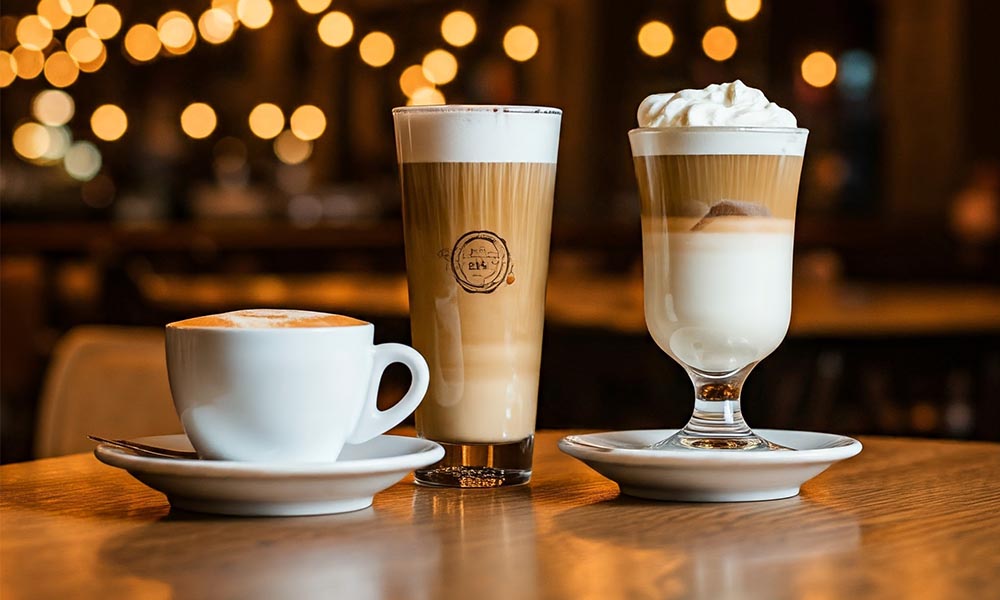

When thinking of coffee, the mind often wanders to Italy or the spiced coffees of the Middle East. However, Germany, with its meticulous attention to detail and love for rituals, has cultivated a unique and fascinating coffee culture. From centuries-old traditions and intriguing anecdotes to new trends in the world of specialty coffee, today we explore everything that makes German coffee special.
The history of Coffee in Germany
Coffee arrived in Germany in the latter half of the 17th century when Dutch merchants began importing beans from Arabia. The first coffeehouses emerged in Hamburg and Bremen, both strategic trading ports in the north. However, Berlin played a crucial role in transforming coffee into a cultural phenomenon. Intellectuals, artists, and the bourgeoisie would gather in Kaffeehäuser, where coffee was enjoyed alongside long philosophical and political discussions.
In the 18th century, coffee spread among middle-class families, largely thanks to the tradition of Kaffeekränzchen—small afternoon gatherings where coffee and cakes were enjoyed, often featuring delicacies like the famous Schwarzwälder Kirschtorte (Black Forest cake). During World War II, coffee was replaced by Muckefuck, a substitute made from roasted grains, but the post-war return to normality saw an explosion of new habits, such as Caffè Crema, made popular by the automatic coffee machines that became widespread across the country.
Anecdotes and curiosities
Germany’s passion for coffee has even been immortalised in music. Johann Sebastian Bach, a well-known coffee lover, composed the famous Coffee Cantata (Kaffeekantate), a humorous piece about a young woman’s addiction to coffee.
Another fascinating story is that of the Pharisäer, a coffee drink created on the cold shores of the North Sea. Legend has it that it was invented to deceive religious leaders who forbade alcohol consumption. The drink cleverly concealed rum beneath a layer of whipped cream, preventing its aroma from giving away the secret.
Traditional German Coffee recipes
German coffeehouses offer a variety of beverages that blend tradition and flavour. Here are some of the most famous:
Caffè crema
Caffè Crema is a longer version of espresso, distinguished by its golden crema and smooth taste. Made with medium-roasted beans, it’s perfect for those who prefer a well-balanced drink that’s less intense than an Italian espresso.
How to make it at home:
- Use an automatic or semi-automatic coffee machine with a medium grind, specifically for a long espresso.
- Set the coffee dose to 18-20 grams and extract 150-180 ml over 30-40 seconds.
- Pour into a large cup and enjoy it plain or with a splash of warm milk.
Pharisäer
This coffee with rum is the perfect treat for cold days. Sweet and aromatic, it combines the strength of coffee with the warmth of rum and the softness of whipped cream.
Ingredients:
- 1 cup of filtered or long coffee
- 1 tablespoon of sugar (optional)
- 20-30 ml of dark rum
- 50 ml of fresh whipped cream
Method:
- Brew the coffee and sweeten it with sugar if desired.
- Pour the rum into a heat-resistant cup, add the hot coffee, and stir.
- Top with a generous layer of whipped cream and serve immediately. For an extra touch, sprinkle with cocoa powder.
Eiskaffee
Eiskaffee is the ultimate summer dessert, beloved for its combination of cold coffee and ice cream.
Ingredients:
- 1 cup of cold coffee or a chilled double espresso
- 2 scoops of vanilla ice cream
- Whipped cream
- Cocoa powder or chocolate shavings for decoration
Method:
- Brew the coffee and let it cool completely in the fridge.
- Pour the cold coffee into a tall glass and add the vanilla ice cream.
- Decorate with whipped cream and a dusting of cocoa or grated chocolate. Serve with a straw and a spoon.
Specialty Coffee in Germany
In recent years, Germany has become a prime destination for specialty coffee lovers. Berlin, Hamburg, and Munich are home to some of Europe’s most innovative coffeehouses. Here, the focus is on single-origin beans, alternative brewing methods, and roasting profiles that highlight the unique characteristics of each coffee.
Methods such as pour-over, AeroPress, and Chemex are particularly popular, as is the use of precision filters and digital scales to achieve perfect extractions. German artisan roasteries, such as The Barn in Berlin, have helped spread the concept of high-quality coffee, fostering a new level of awareness among consumers.
Whether it’s a smooth Caffè Crema, an indulgent Pharisäer, or a refreshing Eiskaffee, German coffee traditions have something for everyone. And for those looking to venture into the world of specialty coffee, Germany is a true goldmine, filled with coffeehouses and roasteries that continue to push the boundaries of flavour.
If you want to recreate these recipes at home or explore high-quality brewing methods, visit Caffelab to discover equipment, carefully selected beans, and all the tools you need to experience the authentic taste of German coffee.